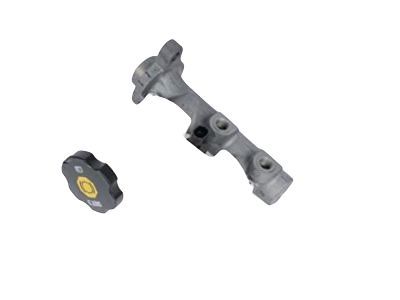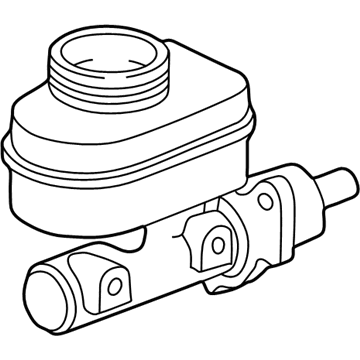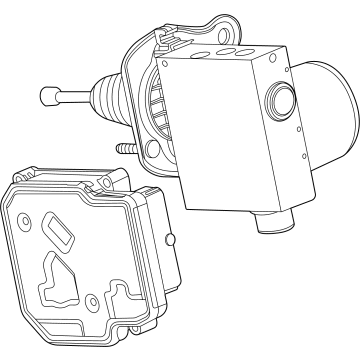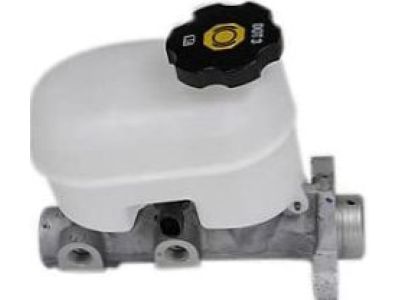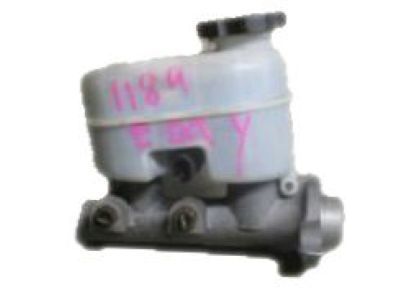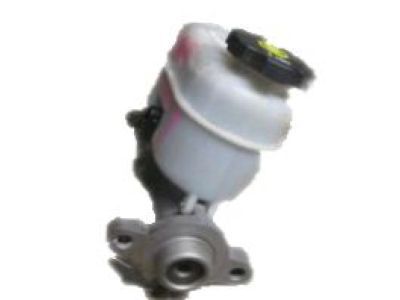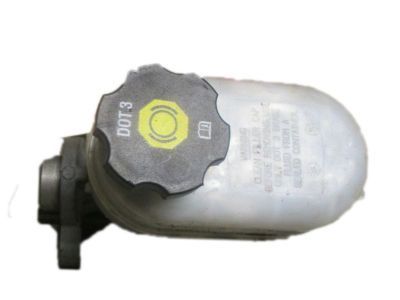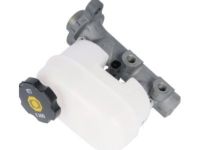
My Garage
My Account
Cart
Genuine Chevrolet Trailblazer Brake Master Cylinder
- Select Vehicle by Model
- Select Vehicle by VIN
Select Vehicle by Model
orMake
Model
Year
Select Vehicle by VIN
For the most accurate results, select vehicle by your VIN (Vehicle Identification Number).
6 Brake Master Cylinders found
Chevrolet Trailblazer Cylinder,Brake Master
Part Number: 15142479$53.00 MSRP: $100.00You Save: $47.00 (47%)Ships in 1-3 Business DaysChevrolet Trailblazer Valve Kit, Elek Tract Cont Brk Press Mod
Part Number: 42742904$731.65 MSRP: $1330.28You Save: $598.63 (45%)Ships in 1-3 Business DaysChevrolet Trailblazer CYLINDER ASM,BRK MAS
Part Number: 19417223$161.18 MSRP: $293.06You Save: $131.88 (45%)Ships in 1-3 Business DaysChevrolet Trailblazer VALVE KIT-ELEK TRACT CONT BRK PRESS MOD
Part Number: 42790149$769.47 MSRP: $1227.22You Save: $457.75 (38%)Ships in 1-2 Business DaysChevrolet Trailblazer CYLINDER ASM-BRK MAS(W/P/B BOOS&ELEK BRK)
Part Number: 42862813$805.47 MSRP: $1041.32You Save: $235.85 (23%)
Chevrolet Trailblazer Brake Master Cylinder
Brake Master Cylinder used in Chevrolet Trailblazer cars is an imperative part of the braking system that translates the pressure exerted by the foot of car's driver into hydraulic pressure. This hydraulic pressure reaches the slave cylinders which in turn applies pressure on the brake thus providing he needed friction to halt the car. The braking system of Chevrolet Trailblazer usually involves use of dual circuit master cylinder since in case one of the circuits loses their efficiency the other one is able to provide sufficient power for the braking system. Chevrolet Trailblazer Brake Master Cylinders can either have a provision for an inbuilt reservoir or one which has a separate reservoir, although the ones with the external reservoirs are comparatively more frequent. The integral type is found to have one cap which is attached to it while the external type may consist of one or two threaded caps at times. In time though, these problems may develop in form of fluid leaks or internal system faults and hence require proper scrutiny and servicing for efficiency. This is due to the fact that Brake Master Cylinder plays an important role in the braking system of the Chevrolet Trailblazer, therefore, the design and functionality of this component must be well worked out.
Each OEM Chevrolet Trailblazer Brake Master Cylinder we offer is competitively priced and comes with the assurance of the manufacturer's warranty for the part. Furthermore, we guarantee the speedy delivery of your orders right to your doorstep. Our hassle-free return policy is also in place for your peace of mind.
Chevrolet Trailblazer Brake Master Cylinder Parts Questions & Experts Answers
- Q: How to remove and install a brake master cylinder on Chevrolet Trailblazer?A:To disassemble the Brake Master Cylinder, it is necessary to join the cable from the negative terminal of the battery and also to disconnect the electrical connector for the fluid level warning switch. Suction out the reservoir by using a suction gun, a large syringe or poultry baster after which lay rags on the fittings in order to absorb any spills that may occur when the lines are disconnected and prepare caps or plastic bags to cover the end of the lines after disconnecting them. Remove the nuts on the ends of the Brake Lines where they are connected to the Brake Master Cylinder; to do this, use a flare-nut wrench so that the flats are not rounded off, then pull the brake lines out and plug the ends to avoid contamination. The Brake Master Cylinder should be disconnected from the power Brake Booster; therefore, the nuts securing the two components have to be taken off. For installation, bench bleed the new Brake Master Cylinder by using a set of bleeder tubes inserted into the outlet ports place it in a vise and fill the reservoir with the recommended brake fluid for a while. Gradually, the pistons have to be advanced into the Brake Master Cylinder in order to force out the air, and this must be done until there is no more bubble visible. When bleed tubes are disconnected then plugs are fitted, the Brake Master Cylinder should be positioned over studs of the power brake booster with new gasket and nuts tightened until finger tightness. Slide the brake line fittings into the Brake Master Cylinder taking consideration on the male threads not to stripped, then tighten the mounting nut and fittings. Pump the brake fluid into the reservoir, unscrew the line connections at the Brake Master Cylinder and let an assistant press down the brake pedal as the fittings are opened and the air/brake fluid mixture is vented until the brake fluid gives a ringing sound when dropped in a metal pan. Lastly check whether all the brake system is in proper working condition before going for a drive. For reservoir or O-ring replacement, do not strip the Brake Master Cylinder of brake fluid, put some rags beneath the Brake Master Cylinder. Remove the roll pins that hold the reservoir, then pull it out, if you are replacing the O-rings then pop off the old ones and install new ones after which it is recommended that you lubricate the O-rings with fresh brake fluid before fixing the reservoir using the new roll pins. Replace the brake fluid in the reservoir with the recommended type and look for any weeping at the Brake Master Cylinder before bleeding the latter as done above.
Related Chevrolet Trailblazer Parts
Browse by Year
2025 Brake Master Cylinder 2024 Brake Master Cylinder 2023 Brake Master Cylinder 2022 Brake Master Cylinder 2021 Brake Master Cylinder 2009 Brake Master Cylinder 2008 Brake Master Cylinder 2007 Brake Master Cylinder 2006 Brake Master Cylinder 2005 Brake Master Cylinder 2004 Brake Master Cylinder 2003 Brake Master Cylinder 2002 Brake Master Cylinder


